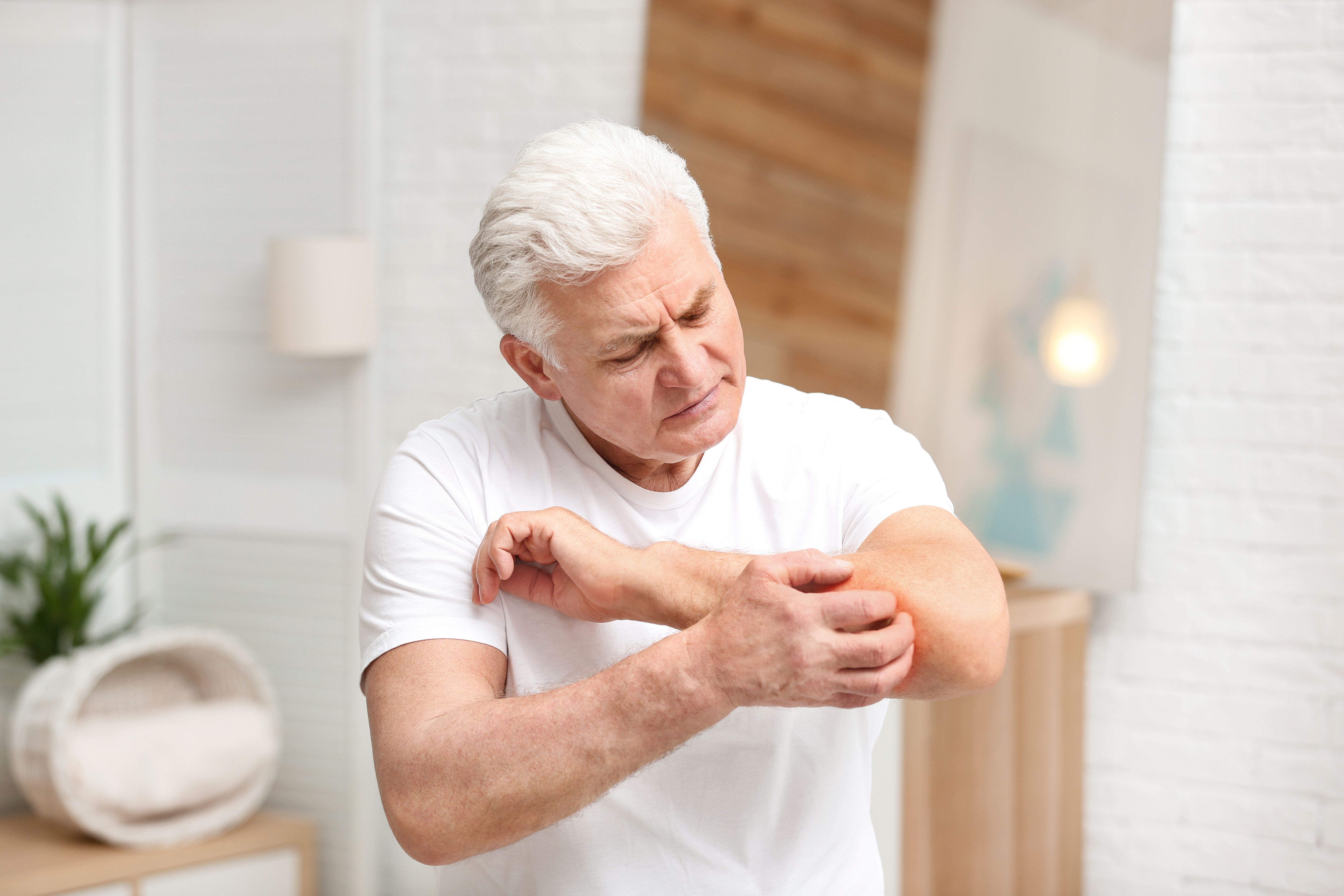- General Dermatology
- Eczema
- Alopecia
- Aesthetics
- Vitiligo
- COVID-19
- Actinic Keratosis
- Precision Medicine and Biologics
- Rare Disease
- Wound Care
- Rosacea
- Psoriasis
- Psoriatic Arthritis
- Atopic Dermatitis
- Melasma
- NP and PA
- Skin Cancer
- Hidradenitis Suppurativa
- Drug Watch
- Pigmentary Disorders
- Acne
- Pediatric Dermatology
- Practice Management
Atopic Dermatitis Itch May Be Caused by Microbes, Not Inflammation
Researchers have found Staphylococcus aureus may trigger itchiness in atopic dermatitis, opening the door to new treatment approaches in the future.
New Africa/AdobeStock

New research published in Cell suggests that the itching experienced by patients with atopic dermatitis may not be due to inflammation, as is commonly assumed, but instead to the bacterium Staphylococcus aureus and its effects on nerve cells.1
The study authors claim their findings regarding the role of microbes in itch generation are novel and could change how itch is treated clinically.
“We’ve identified an entirely novel mechanism behind itch—the bacterium S. aureus, which is found on almost every patient with the chronic condition atopic dermatitis. We show that itch can be caused by the microbe itself,” said senior author Isaac Chiu, associate professor of immunology in the Blavatnik Institute at Harvard Medical School, in a Harvard news release.2
Chiu et al used a mouse model to test various bacteria and found that S. aureus caused itch that intensified over several days and led to an itch-scratch cycle, skin damage, and allokneisis, a hypersensitive response to gentle stimuli.
"It's a speculation at this point, but the itch-scratch cycle could benefit the microbes and enable their spread to distant body sites and to uninfected hosts," said study author Liwen Deng in the news release.
Mast cells and basophils did not drive itch after bacterial exposure, the study showed.
Specifically, the S. aureus serine protease V8 was found to be the critical mediator in evoking spontaneous itch and alloknesis. V8 triggers itch by activating the protein PAR1, which is found on skin neurons that carry signals to the brain.Inhibiting V8-PAR1 signaling could treat itch, Chiu et al proposed.
They suggested that PAR 1 inhibitors (ie, vorapaxar), now used for patients with atherothrombosis,3 could one day be used in topical creams to control itch.
“Itch can be quite debilitating in patients who suffer from chronic skin conditions. Many of these patients carry on their skin the very microbe we’ve now shown for the first time can induce itch,” said Deng in the news release.
"When we started the study, it was unclear whether the itch was a result of inflammation or not," Deng added. "We show that these things can be decoupled, that you don't necessarily have to have inflammation for the microbe to cause itch, but that the itch exacerbates inflammation on the skin."
The researchers plan to investigate whether microbes other than S. aureus can trigger itch, Harvard reported.
“We know that many microbes, including fungi, viruses, and bacteria, are accompanied by itch, but how they cause itch is not clear,” Chiu said in the news release.
References
- Deng L, Costa F, Blake KJ, et al. S. aureus drives itch and scratch-induced skin damage through a V8 protease-PAR1 axis. Cell. 2023; 86(24): 5375 DOI: 10.1016/j.cell.2023.10.019
- Pesheva E. New clues into the head-scratching mystery of itch. News release. Harvard Medical School. November 22, 2023. Accessed February 23, 2024. https://hms.harvard.edu/news/new-clues-head-scratching-mystery-itch
- Al-Khafaji K, Mutyala M, Al-Khafaji N, et al. Protease-activated receptor 1 inhibitors: novel antiplatelet drugs in prevention of atherothrombosis. Am J Ther. 2017;24(6):e730-e736. doi:10.1097/MJT.0000000000000347
